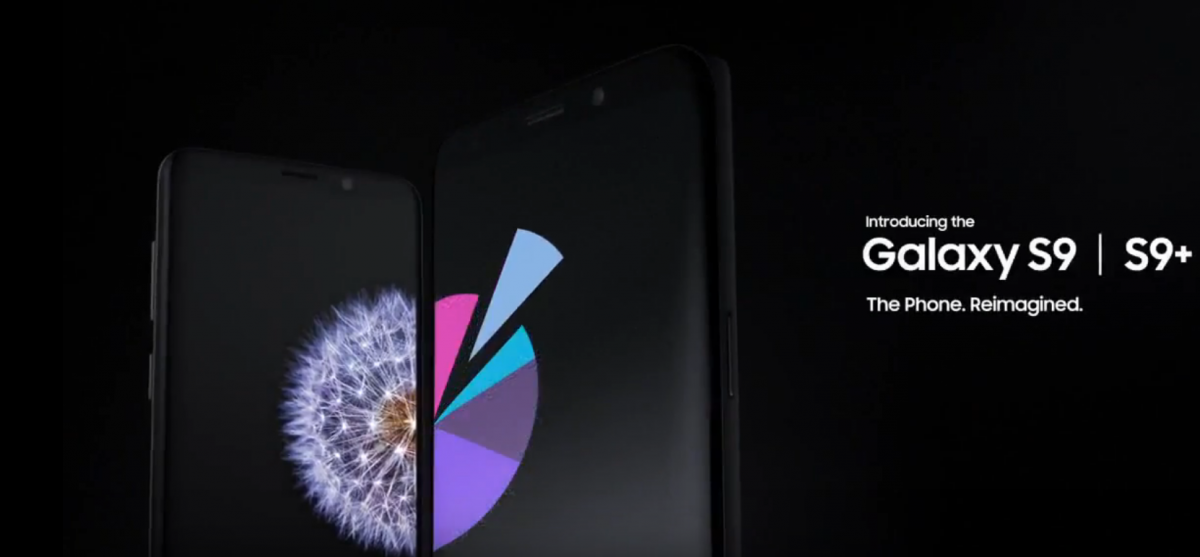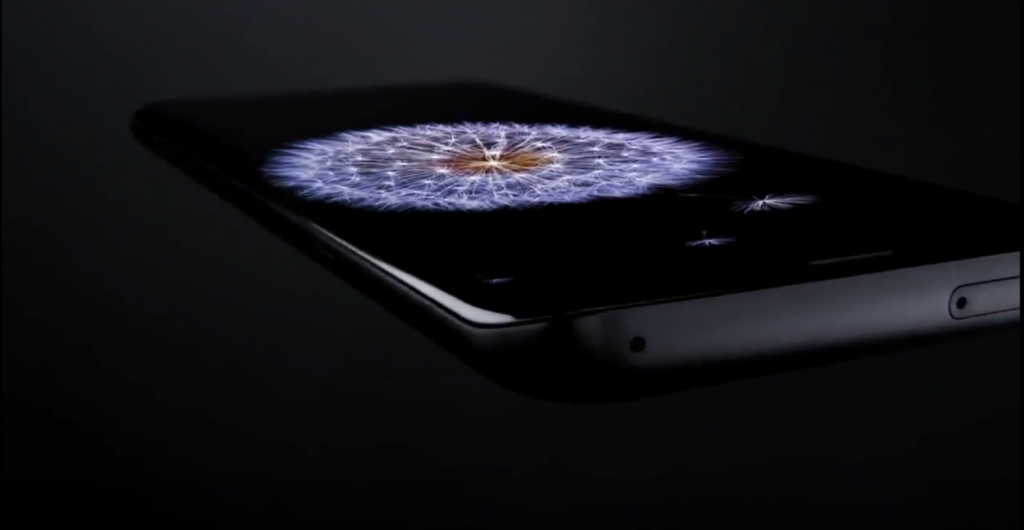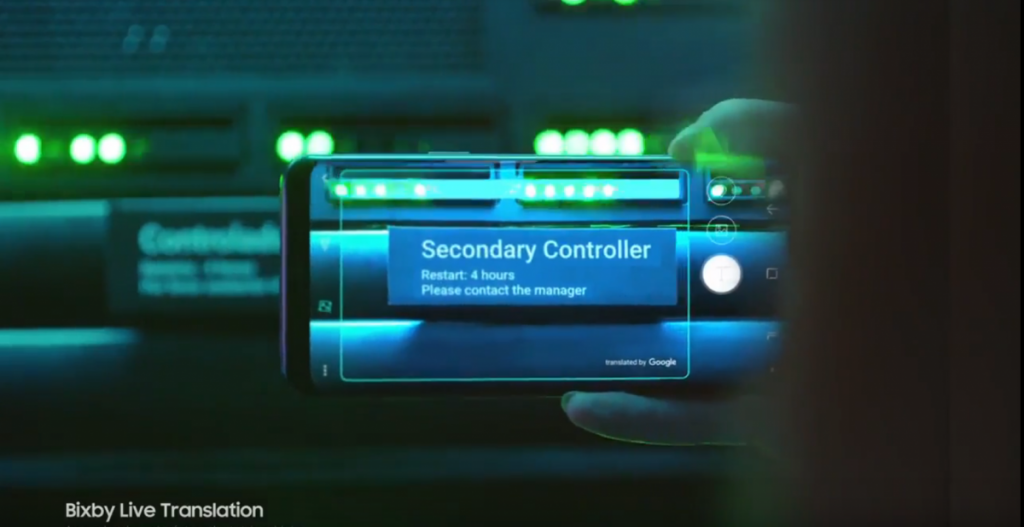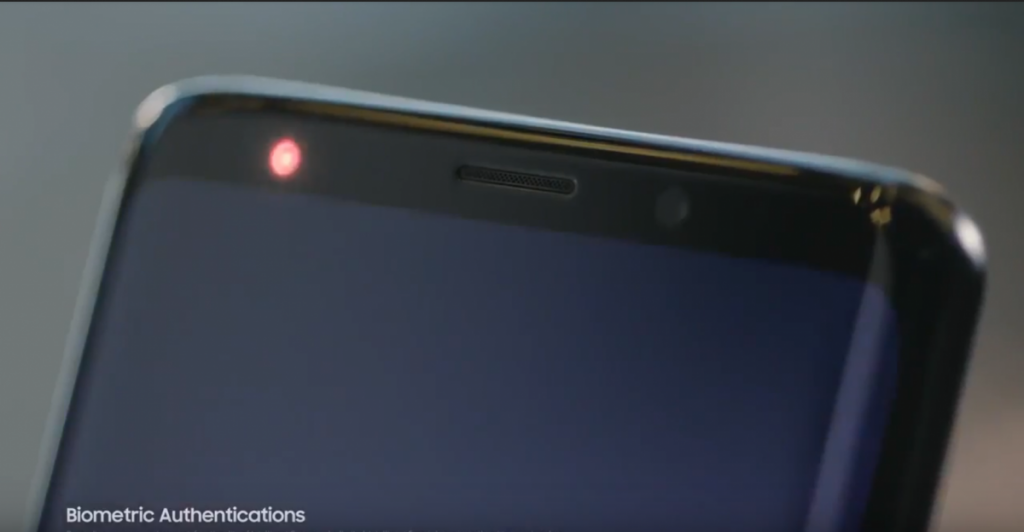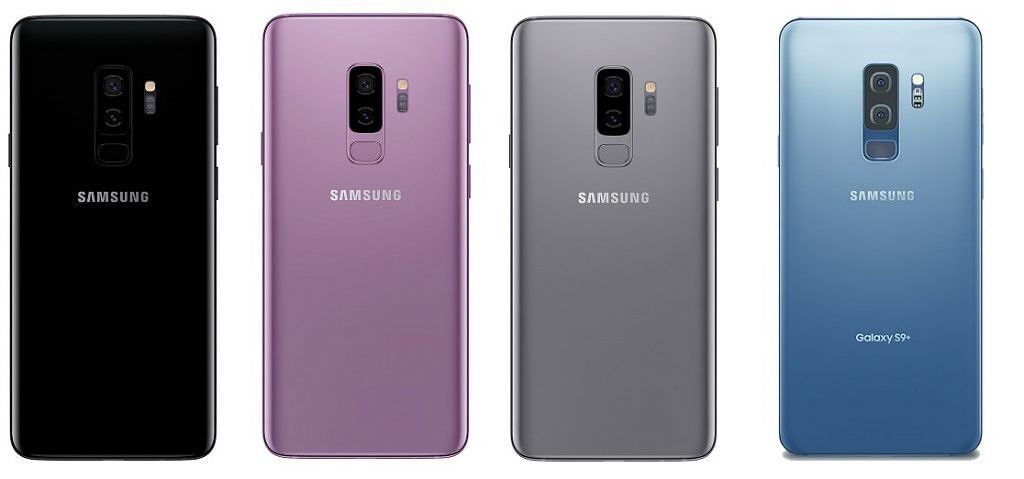After months of anticipation and many leaks which have spilled the beans on basically everything, Samsung has finally unveiled their new Galaxy S9 and Galaxy S9+. Prior leaks have unveiled the design, hardware specifications, and most of the new software features, but today, Samsung finally confirmed everything during its Samsung Unpacked event at Mobile World Congress 2018 in Barcelona, Spain. We also know when the phones will be available, what models there will be, what accessories they will come with, and finally how much they will cost.
In a nutshell, these devices are pretty similar to last year's Samsung Galaxy S8 and Galaxy S8+ besides some minor hardware upgrades and a major camera upgrade. With the new Qualcomm Snapdragon 845 or Exynos 9810, you can expect around 30% faster performance compared to last year's Qualcomm Snapdragon 835 or the Exynos 8895. With the new variable f/1.5 and f/2.4 aperture camera, the camera will take great shots in both good and poor lighting conditions. Launching with Android 8.0 Oreo, the phone will offer the best of Google's new software features such as picture-in-picture mode, support for the Autofill API, notification channels and snoozing, stricter background apps and service limitations for better battery life and memory usage, and much more. In addition, Samsung Experience 9.0 brings an overhauled keyboard app, new Edge Lighting effects, more lock screen customization, and a few new features unique to the Samsung Galaxy S9 and Galaxy S9+.
Let's dive in to the nitty-gritty of what's new with the latest Samsung Galaxy flagships.
Samsung Galaxy S9 and Galaxy S9+ Specifications at a Glance
|
Galaxy S9 |
Galaxy S9+ |
|
|---|---|---|
|
Display Size |
5.8” QHD+ (2960x1440) sAMOLED 18.5:9 |
6.2” QHD+ (2960x1440) sAMOLED 18.5:9 |
|
Glass Type |
Gorilla Glass 5 |
Gorilla Glass 5 |
|
Display Color Palette |
HDR10 |
HDR10 |
|
System-on-chip |
Qualcomm Snapdragon 845/Exynos 9810 |
Qualcomm Snapdragon 845/Exynos 9810 |
|
RAM Capacity |
4GB |
6GB |
|
Storage Capacity |
64GB/128GB/256GB + Micro SD Card slot (up to 400GB) |
64GB/128GB/256GB + Micro SD Card slot (up to 400GB) |
|
Speaker System |
AKG Tuned stereo speakers |
AKG Tuned stereo speakers |
|
Headphone Jack |
Yes, 3.5mm |
Yes, 3.5mm |
|
Front Camera |
8MP front camera with auto focus |
8MP front camera with auto focus |
|
Rear Camera |
12MP with f/1.5 and f/2.4 variable aperture |
12MP with f/1.5 and f/2.4 variable aperture + 12MP zoom lens f/2.4 |
|
Battery Capacity |
3,000 mAh battery |
3,500 mAh battery |
|
Wireless Charging |
Yes |
Yes |
|
Fast Charging |
Yes, Samsung Adaptive Fast Charging |
Yes, Samsung Adaptive Fast Charging |
|
Biometrics |
Iris, Facial, and fingerprint recognition |
Iris, Facial, and fingerprint recognition |
|
Water and Dust Resistance |
IP68 |
IP68 |
|
Software |
Android 8.0 Oreo with Samsung Experience 9.0 |
Android 8.0 Oreo with Samsung Experience 9.0 |
The specifications have been known for the past couple months thanks to multiple leaks and are what you would expect with a premium 2018 flagship. The display remains largely the same with a QHD+ sAMOLED panel on both models, 64GB base storage expandable via micro-SDHC, 4/6GB RAM discrepancy between the two models, and the same battery capacities from the Samsung Galaxy S8 series with Samsung's Adaptive Fast Charging technology as well as Qi wireless charging. The Iris scanner and facial recognition, but with a new, clever feature taking advantage of both which we'll get to below. The rear-facing fingerprint sensor also returns, as Samsung had scrapped its plans for an in-display fingerprint sensor awhile back. Love it or hate it, the Bixby button is here to stay on the Samsung Galaxy flagships. Finally, IP68 dust and water resistance is also present on the new models, just as last year's models met the same standard.
Samsung has also opted to keep the 3.5mm headphone jack, something which many other companies like Apple, Google, and HTC have all decided to remove in favor of audio through the USB-C port. Samsung also upgraded their speakers with AKG-tuned stereo speakers. The bottom firing speaker and the earpiece speaker comprise the dual speaker setup, and they also support Dolby Atmos audio enhancements. Overall, the speakers on the Samsung Galaxy S9 are louder and sound better than the current mono speaker on the Galaxy S8.
Samsung Galaxy S9 and Galaxy S9+ Camera Upgrades
Samsung has been putting all of their focus on the camera, and the upgrades they've presented are proof of that. The Galaxy S9 is using Samsung’s new variable aperture technology that will allow the camera to intelligently switch between an aperture better for day time shots, f/2.4, and an aperture better for low light and night time shots, f/1.5. Doing so also helps reduce noise in low light pictures which is currently a problem with many smartphone cameras. The Galaxy S9's bigger brother, the Galaxy S9+, has the same variable aperture camera but also adds a 12MP zoom lens. The second lens can be used for Samsung’s live focus mode which is just normal portrait mode that allows you to adjust the background blur after you take the picture.
The camera also now has Super Slow Motion which is a 960fps slow motion burst at 720p resolution. This will be great for slow motion video as this is far slower than currently available on the Galaxy S8.
Samsung Galaxy S9 and Galaxy S9+ Software Features
With the Galaxy S9, Samsung is unveiling new features for their Bixby Virtual Assistant. Bixby is now able to use the front facing camera to add makeup to your face and in partnership with Sephora, will allow you to use augmented reality to see how makeup looks on you before purchasing the makeup right through Bixby. Bixby Vision now supports real time translation through Google Translate, although the Google Translate app itself already has that.
Samsung also has their own take on Apple's Animoji called 3D Emoji. These are similar to Animoji, but these allow you to make an avatar for yourself from a selfie rather than speak into it like Apple’s Animoji. You will also be able to customize the avatar to let you change specific parts of it if you don’t like it. There is also a depth-sensing sticker feature that allows you to add a sticker or image to a picture taken using the dual camera on the Galaxy S9+ and then adjust the depth afterwards.
While the Galaxy S9 may not have Apple iPhone 8/X level biometric facial recognition, thanks to a new combination of an Iris scanner and existing facial recognition software called Intelligent Scan, the Galaxy S9 will have more accurate and faster biometric facial recognition than its predecessor while also having the advantage of being more secure.
In general, though, the software experience should be pretty similar to the Samsung Experience 9.0 version that is currently on the Galaxy S8's Android Oreo update (and is being tested on the Samsung Galaxy Note8 and Samsung Galaxy S7 Edge). There may be other minor changes, but we will not know about them until we can get our hands on the device.
Samsung Galaxy S9 Accessories
With the Samsung Galaxy S8 and Galaxy S8+, the company also launched Samsung DeX: its platform that transforms the smartphones into a mobile personal computer. With the new Galaxy flagships, Samsung is introducing a new Samsung DeX Pad. This is similar to the Samsung DeX Station that was released with the Galaxy S8, but this one allows you to use the device as a trackpad and keyboard for the DeX so you will just need a monitor.
Next up, Samsung is also introducing a Fast Wireless Charger (model number EP-N5100), which is slightly different than the one that is offered with the Galaxy S8. Overall, it is slightly thinner and flatter, but the basic form factor remains the same. It uses the Qi standard for its wireless charging technology. Internally, there are only two charging coils inserted in the device and they are stacked on top of each other so the phone can be charged in different positions. Just as in the previous charger, only one of the two coils can be used during the charging process. It supports 9V/2A, 9V/1.67A, and 12V/2.1A charging. However, according to FCC documents the power is below 15W even in 9V operation, meaning it will not charge more quickly than its predecessor. It is estimated that it will take 2 hours for it to be fully charged.
There are also a ton of official cases to choose from. There's an LED View, ClearView, Silicone, Protective Standing Cover, and an Alcantara case (all available for the Galaxy S8 series as well). What's new however is the Hyperknit cases which appear to be a woven fabric. All of these cases come in multiple colors, of course.
Samsung Galaxy S9 and Galaxy S9+ Pricing, Colors, and Availability
Both the Galaxy S9 and Galaxy S9+ are coming in 2 new colors: Lilac Purple and Titanium Gray. That is in addition to the two colors that existed for the Galaxy S8, Midnight Black and Coral Blue, making a total of 4 color variants. The Coral Blue color seems a little bit darker than the baby blue color that was used on the Samsung Galaxy Note 7, Galaxy S7, and Galaxy S8.
In the United States, pre-orders will begin on March 2nd, 2018. AT&T, Sprint, T-Mobile, U.S. Cellular, Verizon Wireless, and Xfinity Mobile will be carrying the devices in stores starting March 16th as will Best Buy retail and online, Amazon, Costco, Sam's Club, Target, and Walmart. Cricket Wireless and MetroPCS will only carry the device in Midnight Black, whereas the others will carry it in Lilac Purple, Midnight Black, and Coral Blue.
The device will also be available direct from Samsung for $719.99 for $30/month for 24 months (Galaxy S9) or for $839.99 for $35/month for 24 months financing (Galaxy S9+). Trade-ins will begin on March 2nd, and those who pre-order can save up to $350 with a qualifying trade-in.
Here's the pricing by carrier:
|
Carrier |
Galaxy S9 |
Galaxy S9+ |
|
AT&T |
$790.20 or $26.34 per month for 30 months ($790.20) |
$915 or $30.50 per month for 30 months ($915) |
|
Verizon |
$800 or $33.33 per month for 24 months ($800) |
$930 or $38.74 per month for 24 months ($930) |
|
T-Mobile |
$720 or $30 per month for 24 months ($720) |
$840 or $30 per month for 24 months with a $120 down payment ($840) |
|
Sprint |
$792 or $33 per month for 24 months ($792) |
$912 or $38 per month for 24 months ($912) |
|
Unlocked |
$720 |
$840 |
- Verizon is offering $350 off (in the form of monthly bill credits) the purchase of a Galaxy S9 or S9+ when you buy it on an installment plan and trade in a working Galaxy S8, iPhone 8, or newer. Most other 2017 flagships will get you $300 in bill credits, while older devices will net between $100 and $200.
- T-Mobile's trade-in deal awards up to $360 off Galaxy S9 or S9+ in bill credits on a monthly purchase plan. Smartphones as far back as the Galaxy S7 are eligible; you'll get up to $200 off for older flagships such as the Galaxy S4.
Regional markets should expect to hear from their official Samsung branches in the coming days or weeks about pricing and availability, so keep a look out on the social media pages of your regional branches! In general, Europeans should expect the device to retail for 849€ for the Galaxy S9 and 949€ for the Galaxy S9+.
Samsung Galaxy S9 Enterprise Edition
Samsung has always been big on the enterprise segment along with the consumer market. To entice businesses to purchase the Galaxy S9 for their employees, Samsung is launching a special Enterprise Edition of the two devices. When a business purchases this special model, they are also getting the following:
- Guaranteed security patch updates for 4 years
- Extended device warranties
- Samsung E-FOTA (Firmware Over-The-Air) so IT can remotely configure and update employee devices
- 24/7 Samsung technical support
- Knox Configure which companies can use to create custom logos for their devices
- Samsung's latest Knox security, version 3.1
Samsung Galaxy S9 Development and Modding
The main attraction to the XDA forums is the ability to find a plethora of custom ROMS, kernels, apps, and various mods for all kinds of devices. Our Samsung Galaxy forums are no different. You'll find a ton of activity on our forums, so if you are interested definitely come check them out.
Visit our Samsung Galaxy S9 and Galaxy S9 Forums
There is one thing you'll have to keep in mind and it's the fact that there will be a development discrepancy between the Snapdragon and Exynos models. This is mostly due to the fact that the Snapdragon variants typically do not allow for bootloader unlocking whereas the international Exynos models do. Unfortunately, this means that development can get started on the Exynos models long before the Snapdragon models.
All hope is not lost, however. Thanks to the immense popularity of the Samsung flagships, developers are naturally drawn to the product. Someone eventually will find a way to at least root the device (as has happened with the Snapdragon Samsung Galaxy S8, Galaxy S8+, and Note8). While this will not open up the opportunity to flash something like LineageOS, it will at least give users a modicum of customization.
Exynos Galaxy S9/S9+ owners will very quickly be able to unlock the bootloader and start enabling modifications such as the Xposed Framework. They can then start applying modifications such as the Firefds Xposed Module in order to customize Samsung Experience 9.0 to their liking.
For those of you who prefer not to root your phone, you can still customize a lot thanks to the built-in theme engine. Previously, you would need to use the Sungstratum plug-in for Substratum to apply beautiful system-wide themes. With the introduction of native theme support in Android Oreo, you should now use the new Andromeda plug-in for Substratum if you want to install custom themes.
Lastly, a word on something I'm sure many of you are interested in: Project Treble. Yes, the Galaxy S9/S9+ ship with Project Treble compatibility out of the box (those lucky few who get the device first can confirm this by following our guide). After all that we've said about how Treble can help custom AOSP ROM development, what will this fact mean for the S9/S9+? For the Snapdragon models without an unlockable bootloader, unfortunately it won't help you to get AOSP at all since you need to be able to flash a generic system image (GSI) which requires an unlocked bootloader in the first place. However, the Exynos models can be unlocked, which means it should be possible to get a generic Android Oreo build up and running. It would be the first Exynos device to run a GSI, but if a MediaTek phone with Treble support can do it, it should be possible for the Galaxy S9 as well. Who knows, the GS9/GS9+ could even get a LineageOS 15.1 or CarbonROM build before even the Galaxy S8!
Conclusion
The Samsung Galaxy S9 and Galaxy S9+ might not be major upgrades over the Galaxy S8 and Galaxy S8+, but they're certainly worthy successors to last year's model. The high price of each model may scare some of you, but Samsung generally delivers a quality product so you can rest assure that your money isn't going to waste. While many of you may continue to call Samsung Experience bloated, it is beloved by its fanbase for the many feature additions that it offers on top of Google's Android. Due to the immense popularity of these phones, we'll be keeping an eye out on any developments, mods, apps, and more related to the two phones. Stay tuned to the XDA Portal as our Galaxy S9 coverage is only just beginning!
What are your thoughts on the new Samsung Galaxy flagships? Let us know in the comments below!

